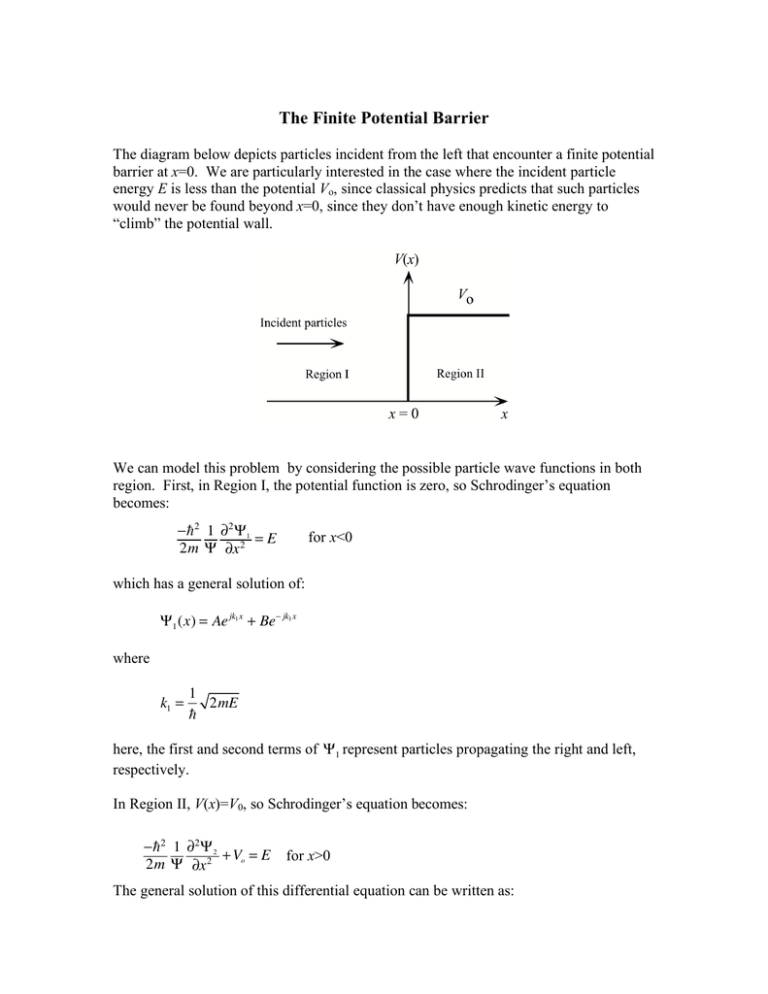The Finite Potential Barrier
advertisement

The Finite Potential Barrier The diagram below depicts particles incident from the left that encounter a finite potential barrier at x=0. We are particularly interested in the case where the incident particle energy E is less than the potential Vo, since classical physics predicts that such particles would never be found beyond x=0, since they don’t have enough kinetic energy to “climb” the potential wall. We can model this problem by considering the possible particle wave functions in both region. First, in Region I, the potential function is zero, so Schrodinger’s equation becomes: !! 2 1 #2 "1 =E 2m " #x 2 for x<0 which has a general solution of: !1 (x) = Ae jk1 x + Be" jk1 x where k1 = 1 2mE ! here, the first and second terms of !1 represent particles propagating the right and left, respectively. In Region II, V(x)=V0, so Schrodinger’s equation becomes: !! 2 1 #2 " 2 + Vo = E 2m " #x 2 for x>0 The general solution of this differential equation can be written as: ! 2 (x) = Ce" k2 x + Dek2 x where k2 = 1 2m (Vo ! E ) ! and it is assumed that V0 > E . We can immediately assume that D=0, since the wave function must be bounded as x ! " . Classical physics would of course predict that the constant C is also zero, meaning that the probability of finding particles in Region II would zero when E<Vo. However, we can find the quantum solution by requiring both !(x) and its first derivative to be continuous at x = 0. (This is necessary in order to keep the kinetic energy of the particles !2 " finite, since E is proportional to 2 ). These two conditions yield: !x A + B = C and jk1 A ! jk1 B = !k2C Solving for B and C in terms of A, we find: " $1 ! B = A$ $1 + $# k2 k1 k j 2 k1 j % ' 2A ' and C = k ' 1+ j 2 '& k1 Since both k1 and k2 are real, the term in brackets in the first expression has a magnitude of unity, which means that A = B This means that the intensity of the forward and backward propagating particle waves in Region I are equal, meaning that all the particles incident on the potential barrier are reflected back towards the source – just as would be expected from classical physics. On the other hand, C is NOT zero, which means that the wave function is nonzero in Region II: ! 2 (x) = Ce" k2 x This means that there is a nonzero probability of finding electrons in the region x>0. However, this probability becomes exponentially smaller with increasing values of x.

